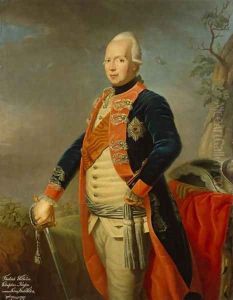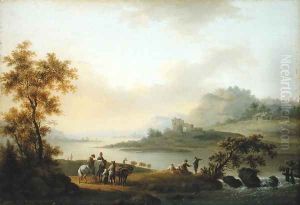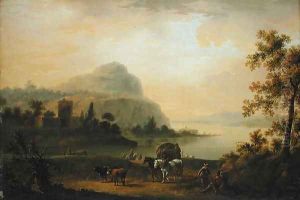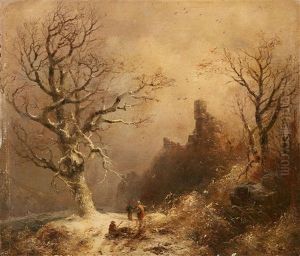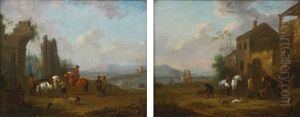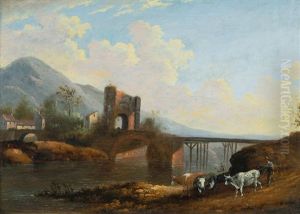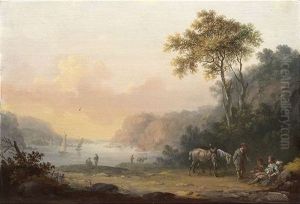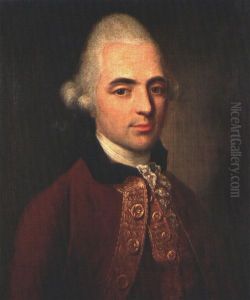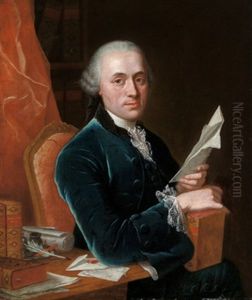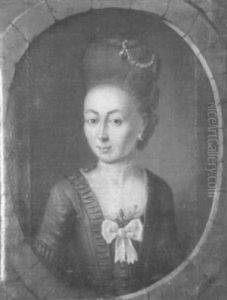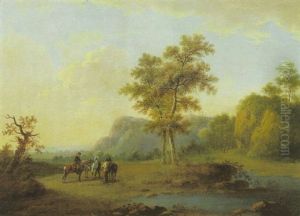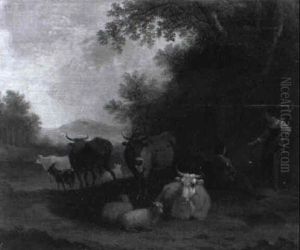Johann Jacob Tischbein Paintings
Johann Jacob Tischbein, also known as 'Haina Tischbein' after his place of birth, was a German painter from the Tischbein family of artists, which included several notable painters during the 18th and early 19th centuries. He was born on March 3, 1725, in Haina, Germany. Johann Jacob was part of a large family, and his relatives, such as Johann Heinrich Tischbein the Elder, and his nephew, Johann Heinrich Wilhelm Tischbein, were also accomplished artists. This familial network of artists is often referred to as the Tischbein family of painters.
Johann Jacob Tischbein's artistic career was primarily focused on portrait painting, although he also produced historical scenes and landscapes. His style was influenced by the Baroque tradition, which was prevalent during the earlier part of his life, as well as the emerging sentiments of the Enlightenment that favored realism and emotional expression in art.
Throughout his career, Tischbein received commissions from notable patrons, which allowed him to travel. He worked in various locations including The Hague and Berlin. His works exhibited a keen attention to detail and a strong grasp of anatomy, which were praised by his contemporaries. Tischbein's portraits were appreciated for their lifelike representation and the insight they provided into the character and status of his sitters.
Johann Jacob Tischbein's legacy is not as widely recognized as that of some of his relatives, but he nonetheless contributed to the Tischbein family's reputation in the arts. His works can be found in regional museums in Germany and occasionally appear in art auctions. Tischbein passed away on August 22, 1791, in Hildburghausen, Germany, leaving behind a body of work that reflects the artistic transitions of his time.
